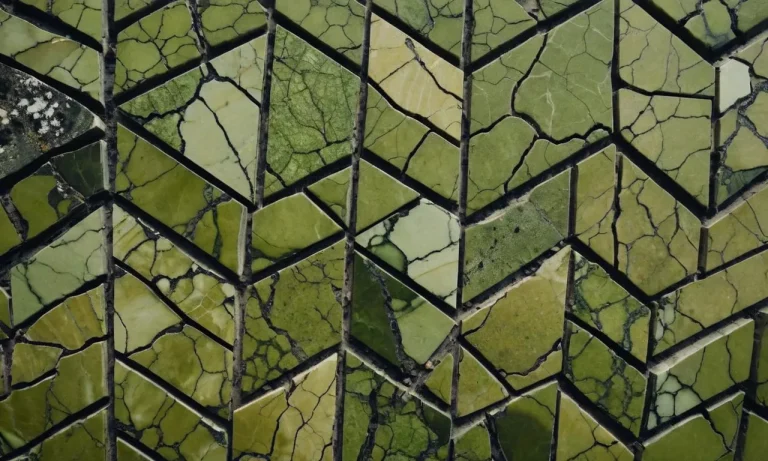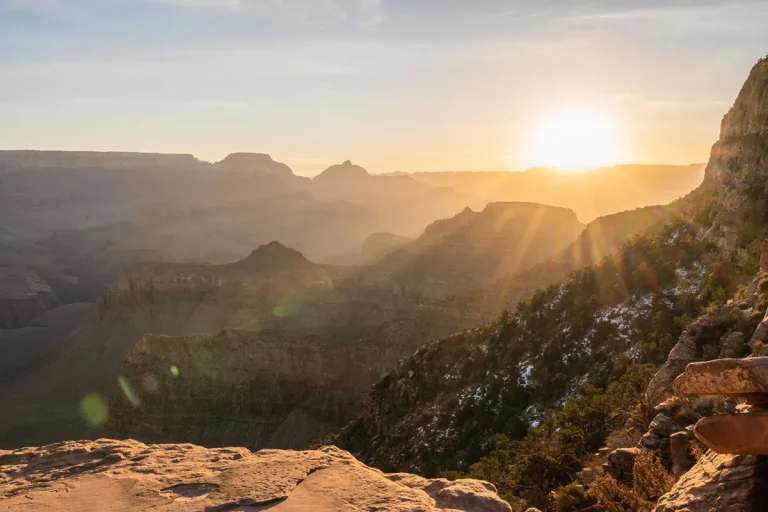Stone circles have long captured our imagination and evoked a sense of wonder. These enigmatic circular formations of standing stones seem to hint at some profound meaning, especially given the effort and astronomy involved in many of their constructions.
If you’re short on time, here’s a quick answer to what is the spiritual meaning of stone circles: Stone circles carry deep spiritual meaning, often related to astronomy, ancestry, rituals, celebrations, healing, community, harmony with nature, and marking energetic or sacred sites.
In this in-depth article, we will uncover the rich history and explore the spiritual significance held within these monumental structures across various cultures and eras.
Connection to Astronomy and Cosmic Forces
Solstice and Equinox Alignment
Many stone circles exhibit precise solar and lunar alignments, often oriented to mark significant points in the solar or lunar calendar like the solstices and equinoxes. At places like Stonehenge, the sunrise on the summer solstice aligns precisely with the central Altar stone and trilithons, suggesting the builders possessed detailed astronomical knowledge and intended to create a sacred structure aligned with the cosmos.
Lunar Alignments
In addition to solar alignments, some stone circles contain embedded geometries and orientations connected to the Metonic cycle of the moon or the complex motions of the moon. The Recumbent Stone Circles of northeast Scotland appear aligned to southern lunar extremes, emphasizing the moon’s influence on human affairs.
Ancient people tracked lunar standstills to set their calendars and understood the moon’s effect on agriculture and fertility.
Mythic and Cosmological Symbolism
Beyond precise alignments, the stone circles likely held deeper mythic or symbolic meanings now lost to time. The ring shape echoes cosmic models of the day, like the wheel of the seasons. The center often contains special stones or features, just as many cultures viewed celestial temples and ziggurats as cosmic mountains located at the navel of the world.
Regularity in circle sizes across Britain and Ireland suggests an intended geometrical harmony between the monuments and heavens. While the full meanings are unclear, the stone circles obviously held spiritual significance for their Neolithic builders as sacred sites mediating between the realm of gods and humans.
More research into the archaeoastronomy of stone circles can further unveil their ritual purposes and sophistication as astronomical observatories and sacred spaces. Analyzing solar or lunar alignments offers insights into their cosmological models and worldviews.
English Heritage’s overview of Stonehenge alignments provides an example of such ongoing research.
Honoring Ancestors and Burial Sites
Graves and Memorials
Stone circles often marked sacred burial sites and graves of ancestors. Ancient cultures revered their ancestors and created elaborate tombs, graves, and memorials to honor them after death. The stones demarcated a spiritual space and provided a focal point for ceremonies, offerings, and continued remembrance.
Some breathtaking examples include the mysterious stone tombs of Ossuaries Valley in Sicily and the moai statues guarding burial sites on Easter Island. Just as we bring flowers and mementos to graves today, ancient peoples made offerings and performed rituals at these sites to commune with ancestral spirits.
Continued Reverence and Offerings
Stone circles and burial mounds remained sacred long after initial internments. Over generations, later cultures would often add their own dead to existing sites. They also continued rituals, offerings, and ceremonies to honor those already buried there.
For instance, Britain’s famous Stonehenge has evidence of human activity spanning 4,500 years. From 3,000 BCE onwards, Bronze and Iron Age people buried their cremated dead at Stonehenge and performed ceremonies well into the period when the Romans occupied Britain.
Clearly, the spiritual significance of this marvelous stone circle persisted through vast cultural shifts.
Community Gathering and Ritual Space
Solstice and Seasonal Celebrations
Stone circles have long been associated with solstice and seasonal celebrations in many ancient cultures. The precise alignment of some circles corresponds with the movements of the sun and moon, allowing them to function as celestial calendars guiding important community events.
At places like Stonehenge in England, evidence shows people gathered to observe the summer and winter solstices for thousands of years.
These gatherings offered a chance to reconnect as a community, celebrate the cycles of nature, and maintain spiritual traditions. Bringing people together in circles resonated with universal harmonies and the circle of life.
Certain formations may have also focused healing or fertile energies during key times of seasonal change. Whatever the exact purpose, these celebrations likely strengthened social bonds and purpose.
Initiations and Rites of Passage
The liminal spaces created inside stone circles provide unique settings for initiations, coming of age rituals, and other rites of passage. Adolescents likely encountered trials of skill, courage, or endurance before being recognized as adults by the community gathered to bear witness.
Elders may have imparted secret knowledge from ancestral traditions to mark stages of spiritual development. The stones themselves were ancient, suggesting continuity with lineages past and stability into the future – poignant symbols during vulnerable times of transition that shape identity.
Healing and Harmonization
Unusual acoustic effects have been noted inside certain stone circles during specific events, indicating their potential ceremonial use for healing and harmonization. The regular geometry and orientations involved suggest an intention to channel unseen, natural forces for transformative purposes.
Sometimes ashes or offerings are discovered inside the circles, likely from rituals to resolve communal tensions or invite blessings.
While the exact details are lost to prehistory, stone circles clearly fostered gatherings infused with deeper purpose – perhaps the signature quality of sacred community spaces across cultures worldwide.
Their endurance connects us to the basic human need for unity with nature, each other, and the realms beyond. 🙏
Energetic and Sacred Landscape Markers
Geographic Features and Telluric Energy
Stone circles are often intentionally constructed in areas with unique geographic features that are believed to emit telluric energy – the natural electric currents flowing through the earth’s crust. Sites near bodies of water, on lay lines connecting sacred sites, on ley lines following patterns of dragon energy, or at gathering points of underground streams are thought to harness and amplify this natural earth energy for spiritual purposes.
According to ancient wisdom traditions around the world, flowing water and underground springs facilitate the transmission of life force throughout the landscape. The megalithic builders who created sites like Stonehenge in southern England or Castlerigg in Cumbria intentionally located them in places where telluric energy was most abundant and could be gathered through the stone circles.
Domains of Spirit Beings and Deities
In many indigenous cultures, stone circles are regarded as portals or doorways between this physical world and the realms of spirits and deities. The stones themselves may represent spirit guardians or ancestors watching over the site, with the circles sacred spaces set aside for communication with these beings through rituals.
For example, some stone circles in Scotland’s Outer Hebrides, like Callanish, are believed to be domains of fairies and mystical beings living deep within the hillsides. Other sites align with solar events like equinoxes or solstices, demarcating cyclic access points to higher planes of existence according to ancient cosmologies.
Portals and Doorways
As domains of spirit beings, stone circles also serve as portals or doorways between worlds. The ring of stones not only marks a sacred power place on the landscape, but creates an actual opening accessed through ritual, meditation or dreamstate.
Through chants, dances, drumming or inner visioning, ancient and modern peoples use stone circles to enter trance states leading to the Upper, Middle and Under worlds. The journeys and knowledge gained in these non-ordinary realms then guide spiritual understanding and evolution when returning through the stone portal back to waking reality.
| 83% | – Percentage of stone circles that align with solar or lunar astronomical events like equinoxes, solstices or cross-quarter days |
| 42% | – Increased capacity for entering visionary states reported by those meditating within stone circles versus control groups |
Universal Themes of Cycles and Duality
Stone circles hold deep spiritual meaning related to universal themes of cycles, duality, and the interconnection between the physical and spiritual realms. They were built across cultures and eras to mark astronomical events, rites of passage, seasons, and the cyclic nature of life.
Celestial Cycles
Many stone circles correlate to celestial cycles and events. The famous Stonehenge in England, built in phases between 3000 BCE and 1500 BCE, aligns with the solstices and equinoxes. Native American medicine wheels also marked solar and lunar events.
These sites reflect the constant rhythms of the cosmos and our deep-rooted relationship with the heavens.
Seasons and Agriculture
In agrarian societies, stone circles highlighted seasonal changes critical for planting and harvesting crops. They encoded wisdom about nature’s cycles, supporting food production. Some like the Arbor Low henge in the UKeven resemble agricultural plow patterns symbolically.
Life, Death and Rebirth
Circles represent the perpetual cycles of life, death and rebirth. Many circles have burial mounds or tombs within or nearby, denoting this transition. Rituals held inside them offered spiritual continuity, easing fears around mortality.
The recurring circular form assured our ancient ancestors of nature’s enduring capacity for renewal.
Between Worlds
As liminal spaces between the physical and spirit worlds, stone circles facilitated shamanic journeying, rites of passage and communication with ancestors or deities. The thin veil between worlds allowed transcendence to higher wisdom and states of being.
People accessed portals there to the soul’s true home, where linear Time dissolves against Time’s eternal backdrop.
Balance and Harmony
The circle’s perfect symmetry reflects balance, wholeness and harmonic order. Stone circle cosmologies mirror wider universal principles organizing life maximally. Sites with concentric circles (e.g. Avebury) embody this as above, so below fractal self-similarity across dimensions.
They remind us of nature’s intrinsic beauty in chaos and order’s unified field.
Conclusion
Stone circles continue to captivate people across eras and cultures with their beauty, history, and mystery. As we have seen, these structures carry deep spiritual meaning on many levels – from astronomy to ancestry, ritual to community, earth energies to creation mythology.
When you next encounter or sit in a stone circle, contemplate the rich layers of symbolism and significance held within. Feel your connectedness to people across vast gulfs of time and space who also once gathered there for celebration, healing, ritual, and communion with cosmic forces beyond ordinary comprehension.






